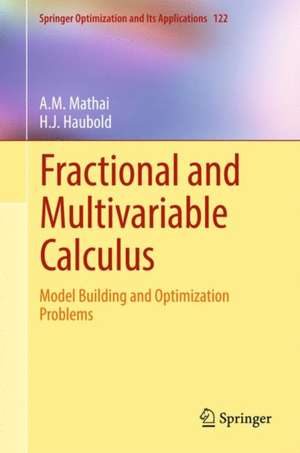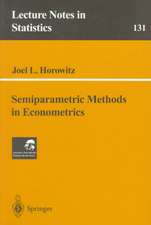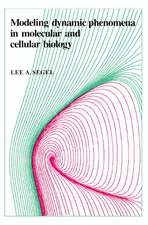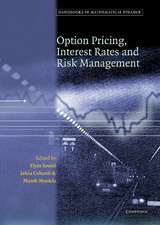Fractional and Multivariable Calculus: Model Building and Optimization Problems: Springer Optimization and Its Applications, cartea 122
Autor A.M. Mathai, H.J. Haubolden Limba Engleză Hardback – 4 aug 2017
The first chapter begins with an introduction to fractional calculus moving on to discuss fractional integrals, fractional derivatives, fractional differential equations and their solutions. Multivariable calculus is covered in the second chapter and introduces the fundamentals of multivariable calculus (multivariable functions, limits and continuity, differentiability, directionalderivatives and expansions of multivariable functions). Illustrative examples, input-output process, optimal recovery of functions and approximations are given; each section lists an ample number of exercises to heighten understanding of the material. Chapter three discusses deterministic/mathematical and optimization models evolving from differential equations, difference equations, algebraic models, power function models, input-output models and pathway models. Fractional integral and derivative models are examined. Chapter four covers non-deterministic/stochastic models. The random walk model, branching process model, birth and death process model, time series models, and regression type models are examined. The fifth chapter covers optimal design. General linear models from a statistical point of view are introduced; the Gauss–Markov theorem, quadratic forms, and generalized inverses of matrices are covered. Pathway, symmetric, and asymmetric models are covered in chapter six, the concepts are illustrated with graphs.
| Toate formatele și edițiile | Preț | Express |
|---|---|---|
| Paperback (1) | 398.96 lei 38-44 zile | |
| Springer International Publishing – 4 aug 2018 | 398.96 lei 38-44 zile | |
| Hardback (1) | 404.42 lei 38-44 zile | |
| Springer International Publishing – 4 aug 2017 | 404.42 lei 38-44 zile |
Din seria Springer Optimization and Its Applications
- 15%
 Preț: 642.00 lei
Preț: 642.00 lei - 15%
 Preț: 664.61 lei
Preț: 664.61 lei - 18%
 Preț: 961.55 lei
Preț: 961.55 lei - 17%
 Preț: 360.79 lei
Preț: 360.79 lei - 13%
 Preț: 458.08 lei
Preț: 458.08 lei -
 Preț: 336.79 lei
Preț: 336.79 lei - 18%
 Preț: 787.91 lei
Preț: 787.91 lei - 17%
 Preț: 397.79 lei
Preț: 397.79 lei - 8%
 Preț: 337.37 lei
Preț: 337.37 lei - 18%
 Preț: 1133.30 lei
Preț: 1133.30 lei - 15%
 Preț: 646.43 lei
Preț: 646.43 lei - 15%
 Preț: 647.40 lei
Preț: 647.40 lei -
 Preț: 400.47 lei
Preț: 400.47 lei -
 Preț: 379.86 lei
Preț: 379.86 lei -
 Preț: 383.90 lei
Preț: 383.90 lei -
 Preț: 388.48 lei
Preț: 388.48 lei -
 Preț: 546.26 lei
Preț: 546.26 lei - 15%
 Preț: 647.40 lei
Preț: 647.40 lei -
 Preț: 390.25 lei
Preț: 390.25 lei - 15%
 Preț: 649.87 lei
Preț: 649.87 lei - 24%
 Preț: 611.55 lei
Preț: 611.55 lei - 18%
 Preț: 972.62 lei
Preț: 972.62 lei - 20%
 Preț: 585.91 lei
Preț: 585.91 lei - 15%
 Preț: 710.09 lei
Preț: 710.09 lei - 18%
 Preț: 742.61 lei
Preț: 742.61 lei - 15%
 Preț: 658.22 lei
Preț: 658.22 lei - 15%
 Preț: 659.02 lei
Preț: 659.02 lei - 18%
 Preț: 745.15 lei
Preț: 745.15 lei - 15%
 Preț: 705.34 lei
Preț: 705.34 lei
Preț: 404.42 lei
Preț vechi: 499.29 lei
-19% Nou
Puncte Express: 607
Preț estimativ în valută:
77.38€ • 81.01$ • 64.03£
77.38€ • 81.01$ • 64.03£
Carte tipărită la comandă
Livrare economică 02-08 aprilie
Preluare comenzi: 021 569.72.76
Specificații
ISBN-13: 9783319599922
ISBN-10: 3319599925
Pagini: 247
Ilustrații: XIII, 234 p. 7 illus.
Dimensiuni: 155 x 235 x 20 mm
Greutate: 0.54 kg
Ediția:1st ed. 2017
Editura: Springer International Publishing
Colecția Springer
Seria Springer Optimization and Its Applications
Locul publicării:Cham, Switzerland
ISBN-10: 3319599925
Pagini: 247
Ilustrații: XIII, 234 p. 7 illus.
Dimensiuni: 155 x 235 x 20 mm
Greutate: 0.54 kg
Ediția:1st ed. 2017
Editura: Springer International Publishing
Colecția Springer
Seria Springer Optimization and Its Applications
Locul publicării:Cham, Switzerland
Cuprins
1. Essential of Fractional Calculus.- 2. Multivariable Calculus.- 3. Deterministic Models and Optimization.- 4. Non-deterministic Models and Optimization.- 5. Optimal Regression Designs. –Index.
Recenzii
“This book presents the readers with a basic overview of the rigorous approach to the study of fractional and multivariate calculus in the context of model building and optimization problems. This book covers a broad range of topics that will enable readers to fully understand and create deterministic and nondeterministic models. … book is well presented and would be very useful for researchers and graduate students working in several areas including mathematics, physics, chemistry, engineering, finance and even social sciences.” (James Adedayo Oguntuase, zbMATH 1376.26001, 2018)
Notă biografică
A.M. Mathai is Emeritus Professor of Mathematics and Statistics, McGill University, Canada, and Director of the Centre for Mathematical and Statistical Sciences, India. He has published over 300 research papers and 25 books on topics in mathematics, statistics, physics, astrophysics, chemistry, and biology. He is a Fellow of the Institute of Mathematical Statistics, National Academy of Sciences of India, served as President of the Mathematical Society of India, and a Member of the International Statistical Institute. H.J. Haubold is Professor of Theoretical Astrophysics. He has published over 200 research papers and 10 books in physics, astrophysics, and the development of basic space science worldwide. The United Nations Basic Space Science Initiative (UN BSSI) for the worldwide development of astronomy, physics, and mathematics was implemented in 1991 through the joint work of H.J Haubold and A.M. Mathai.
Textul de pe ultima copertă
This textbook presents a rigorous approach to multivariable calculus in the context of model building and optimization problems. This comprehensive overview is based on lectures given at five SERC Schools from 2008 to 2012 and covers a broad range of topics that will enable readers to understand and create deterministic and nondeterministic models. Researchers, advanced undergraduate, and graduate students in mathematics, statistics, physics, engineering, and biological sciences will find this book to be a valuable resource for finding appropriate models to describe real-life situations.
The first chapter begins with an introduction to fractional calculus moving on to discuss fractional integrals, fractional derivatives, fractional differential equations and their solutions. Multivariable calculus is covered in the second chapter and introduces the fundamentals of multivariable calculus (multivariable functions, limits and continuity, differentiability, directionalderivatives and expansions of multivariable functions). Illustrative examples, input-output process, optimal recovery of functions and approximations are given; each section lists an ample number of exercises to heighten understanding of the material. Chapter three discusses deterministic/mathematical and optimization models evolving from differential equations, difference equations, algebraic models, power function models, input-output models and pathway models. Fractional integral and derivative models are examined. Chapter four covers non-deterministic/stochastic models. The random walk model, branching process model, birth and death process model, time series models, and regression type models are examined. The fifth chapter covers optimal design. General linear models from a statistical point of view are introduced; the Gauss–Markov theorem, quadratic forms, and generalized inverses of matrices are covered. Pathway, symmetric, and asymmetric models are covered in chapter six, the concepts are illustrated with graphs.
The first chapter begins with an introduction to fractional calculus moving on to discuss fractional integrals, fractional derivatives, fractional differential equations and their solutions. Multivariable calculus is covered in the second chapter and introduces the fundamentals of multivariable calculus (multivariable functions, limits and continuity, differentiability, directionalderivatives and expansions of multivariable functions). Illustrative examples, input-output process, optimal recovery of functions and approximations are given; each section lists an ample number of exercises to heighten understanding of the material. Chapter three discusses deterministic/mathematical and optimization models evolving from differential equations, difference equations, algebraic models, power function models, input-output models and pathway models. Fractional integral and derivative models are examined. Chapter four covers non-deterministic/stochastic models. The random walk model, branching process model, birth and death process model, time series models, and regression type models are examined. The fifth chapter covers optimal design. General linear models from a statistical point of view are introduced; the Gauss–Markov theorem, quadratic forms, and generalized inverses of matrices are covered. Pathway, symmetric, and asymmetric models are covered in chapter six, the concepts are illustrated with graphs.
Caracteristici
Broadens understanding of research fields through the framework of fractional and multivariate calculus Reinforces basic principles of fractional calculus Maximizes readers insight into mathematical models and applications Includes supplementary material: sn.pub/extras

























